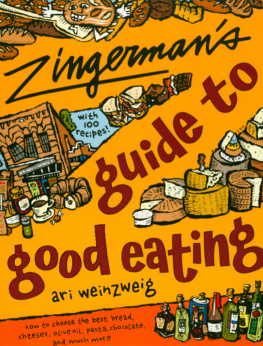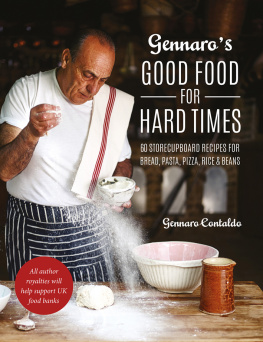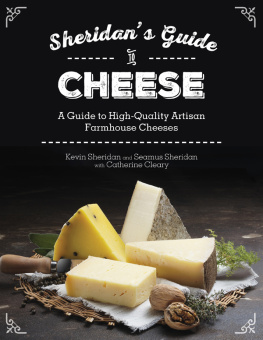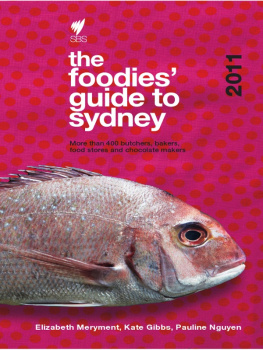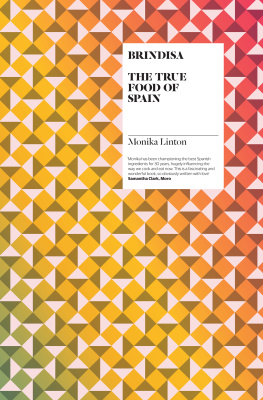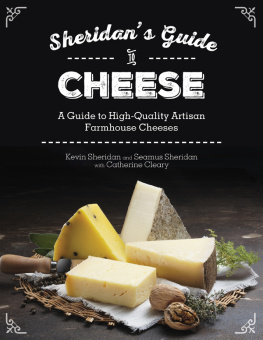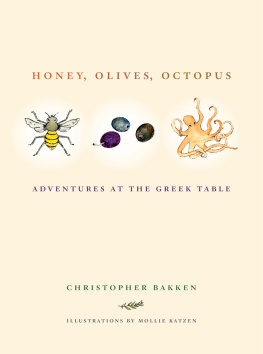Copyright 2003 by Ari Weinzweig
Illustrations copyright 2003 by Dancing Sandwich Enterprises
For information about permission to reproduce selections from this book, write to or to Permissions, Houghton Mifflin Harcourt Publishing Company, 3 Park Avenue, 19th Floor, New York, New York 10016.
Visit our Web site: www.hmhco.com
Library of Congress Cataloging-in-Publication Data
Weinzweig, Ari.
Zingermans guide to good eating : how to choose the best bread, cheeses, olive oil, pasta, chocolate, and much more / Ari Weinzweig.
p. cm.
ISBN 0-618-41108-9
ISBN 0-395-92616-5 (pbk.)
ISBN 978-0-395-92616-1
1. Cookery. 2. Food. 3. Zingermans (Restaurant) I. Zingermans
(Restaurant) II. Title.
TX652.W384 2003
641.5dc21 2003051148
Illustrations by Ian Nagy, with help from Phil Stead, Adam Forman, and Kate Uleman
eISBN 978-0-547-34811-7
v1.0716
Zingermans is a registered trademark of Dancing Sandwich Enterprises, Inc.
in thanks and appreciation
Many thanks to the literally hundreds of friends, family members, partners, and purveyors whove helped me to get all this information together. Im sure that Im forgetting to thank dozens of you; please be patient with me if Ive omitted some names that ought to be on this list. But here goes:
A thousand thanks to Lex Alexander, Darina Allen, Myrtle Allen, Ed Behr, Alexander Berkman, Carla Capalbo, Holly Firmin, Lance Forman, Mark Furstenberg, Emma Goldman, Joyce Goldstein, Jose Guerra, Randolph Hodgson, Caroline Hostettler, Nancy Harmon Jenkins, Steve Jenkins, Michelle Jordan, Joshua Kaiser, Lynne Rossetto Kasper, Mary Keehn, Sotiris Kitrilakis, Evan Kleiman, Kevin Knox, Aglaia Kremezi, Prince Kropotkin, Corby Kummer, Kim Reick Kunoff, Ann Lofgren, Michael and Wendy London, Jan and Dan Longone, Elizabeth Luard, Mike Maki, Peggy Markel, Bill McAlister, Mary Sue Milliken, Elizabeth Minchilli, Dany Mitzman, Ian Nagy, everyone at Oldways and Slow Food, Mariano Sanz Pech, Nicole Pomaranski, Maricel Presilla, Nancy Radke, Justin Rashid, Glenn Roberts, Judy Schad, Lakshmi Shetty, Mike Spillane, Robert Steinberg, Jeffrey Steingarten, Molly Stevens, Ellen Szita, John and Matt Thorne, Vikram and Meeru Vij, Lisa Walker, Paula Wolfert, Lynn Yates, and Daphne Zepos. Thanks to Janet Campbell, Allison Schraf, and Julie Stanley for help with recipes. In remembrance of Lydia Kitrilakis, Lionel Poilne, and Patrick Rance, all of whom passed away while this book was in processthe food world is a less joyous place without them.
Special thanks to the writing group: Mort Cohn, Mabelle Hsui, and Deborah Tyman, whove heard more of this book more times than anyone should probably have had to. Thanks to Doe Coover, for being a great agent. Thanks to Beth Crossman for editing help along the way. A note of gratitude to David Swan, who started pushing me to do this book about ten years ago. Thanks to Rux Martin for editing and for first asking me to do a book more years ago than I can remember. Thanks to Jayne Yaffe Kemp for her very fine and very supportive manuscript editing. And thanks to Melissa Lotfy for her lively, readable design.
Thanks to all the partners at Zingermans: Paul Saginaw, Frank Carollo, Maggie Bayless, Mo Frechette, Jude Walton, Tom Root, Toni Morell, Amy Emberling, John Loomis, Dave Carson, Stas' Kazmierski, Todd Wickstrom, and Alex Young. Thanks, too, to everyone in our organization for all your support, encouragement, and enthusiasm and for giving me the opportunity to work in such a special group.
About ten thousand thanks to the one and only Jenny Tubbs, without whom much of this book wouldnt exist.
Thanks to Laurel for being so supportive and patient with me while Ive worked on this seemingly without end over the past five years.
A Personal Preface
Making a living working with food is a wholly unexpected outcome for a kid who grew up without an iota of interest in either cooking or business.
I know it would be far more romantic to tell a tale of youthful fascination with the ethnic neighborhood eateries in my native Chicago. Or that I ran straight home from school to help my mother prepare old family recipes in our small South Side apartment kitchen. But in truth, I had no clue about what I was going to do when I eventually grew up. When I went off to college in Ann Arbor, I figured something would occur to me.
At the end of my sophomore year at the University of Michigan, I arrived at that dreaded deadline: I had to declare my major.
Having successfully avoided any definitive career decision to date, I opted for what I was interested in, which, at the time, was history. Russian history, to be exact. I was fascinated by the tsars, Soviet dissidents, nineteenth-century anarchists, endless cycles of revolution, rebellion, and reform. Food was most definitely not in the pictureI was bewitched by bomb throwers, not bread bakers; drawn to onion domes, not onion soups; probably pondered the Politburo, but most certainly not pastrami.
The idea for Zingermans originated in the late 1970s, at a restaurant in which I started my food career as a dishwasher and where my now partner, Paul Saginaw, was the general manager. Despite the disparity in our respective levels of responsibility, we became good friends. Quickly I moved my way up the organizational ladder from dishwasher to prep person to line cook and kitchen manager, during which time Paul and I spent many an evening discussing what we might do if we had our own place. In 1979 Paul left the restaurant and opened a fish market in a converted feed-and-seed store beside the Ann Arbor farmers market. Still, we stayed friends, getting together to share strategies about one food business fantasy or another. The idea that stuck was a deli; wed both grown up eating Jewish food (Paul in Detroit), and wed been accustomed to enjoying a good corned beef sandwich when we wanted one. Not to mention all the traditional Jewish dishes wed had the opportunity to eat at home: chicken soup with matzo balls, noodle kugel, potato latkes, chopped liver, none of which was available in Ann Arbor.
Finally, in the fall of 1981, I found myself growing increasingly itchy to move beyond the corporate food world, which paid mere lip service to quality. Without a real plan in mind, I gave two months notice and started preparing myself for some unknown but hopefully exciting future. Then, in one of those twists of fate that you can never explain, Paul called me. Opportunity beckoned: a building across the street from the fish market was opening up, and he thought it was time for us to launch our deli. In early December, we started meeting regularly to review menus, business plans, pro forma financials, and everything else we thought might be relevant.
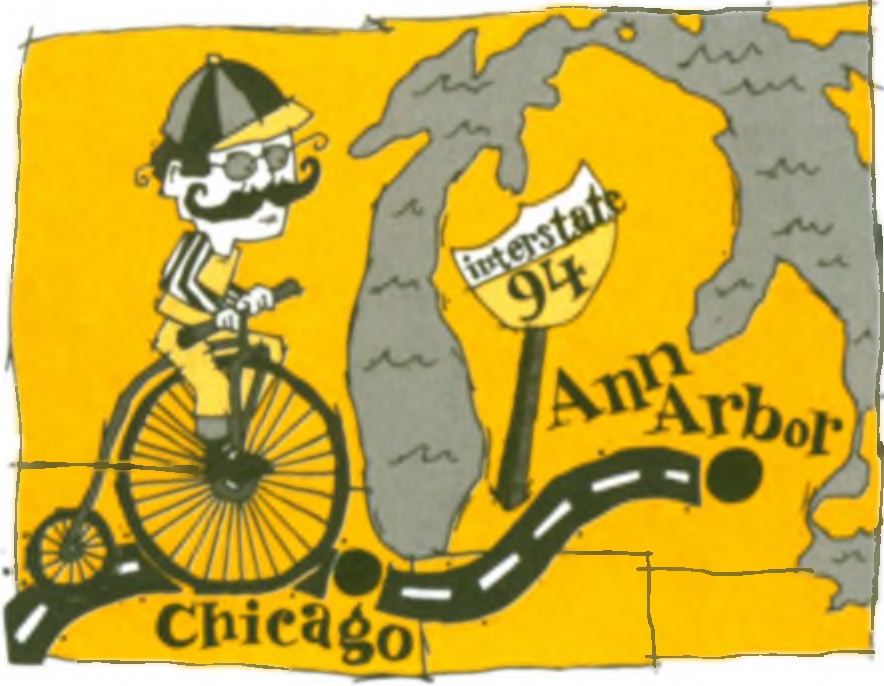
For some reason, Ann Arbor had, until then, been anathema to delisa dozen had opened and closed their doors during the previous decade. Still, no matter how many times we went over our plans, we couldnt figure out any reason why a good one wouldnt succeed. If we sold good food, gave good service, and took care of our crew, we reasoned, people would come back. So we decided to go for it. On March 15, 1982, we opened Zingermans doors for the first time.
The one question nearly everyone asks us is where we got the name. The short answer: we made it up. The long answer goes like this: we wanted a name that would convey the sense of a good local deli, something that would sound Jewish, would somehow telegraph that this was a real delicatessen. Because both Paul and I are Jewish, we might have opted to use either his last name or mine. But neither was of any value in Ann Arbor. Weinzweig is unpronounceablenot a great way to go into business. Saginaw is an anglicized version of Sagin Or, which is Hebrew for seer of light, but in Michigan, Saginaw is almost immediately associated with either the city of the same name or the Native American tribe after which the city was named. Nobody hears Saginaw and thinks corned beef sandwich.
Next page
